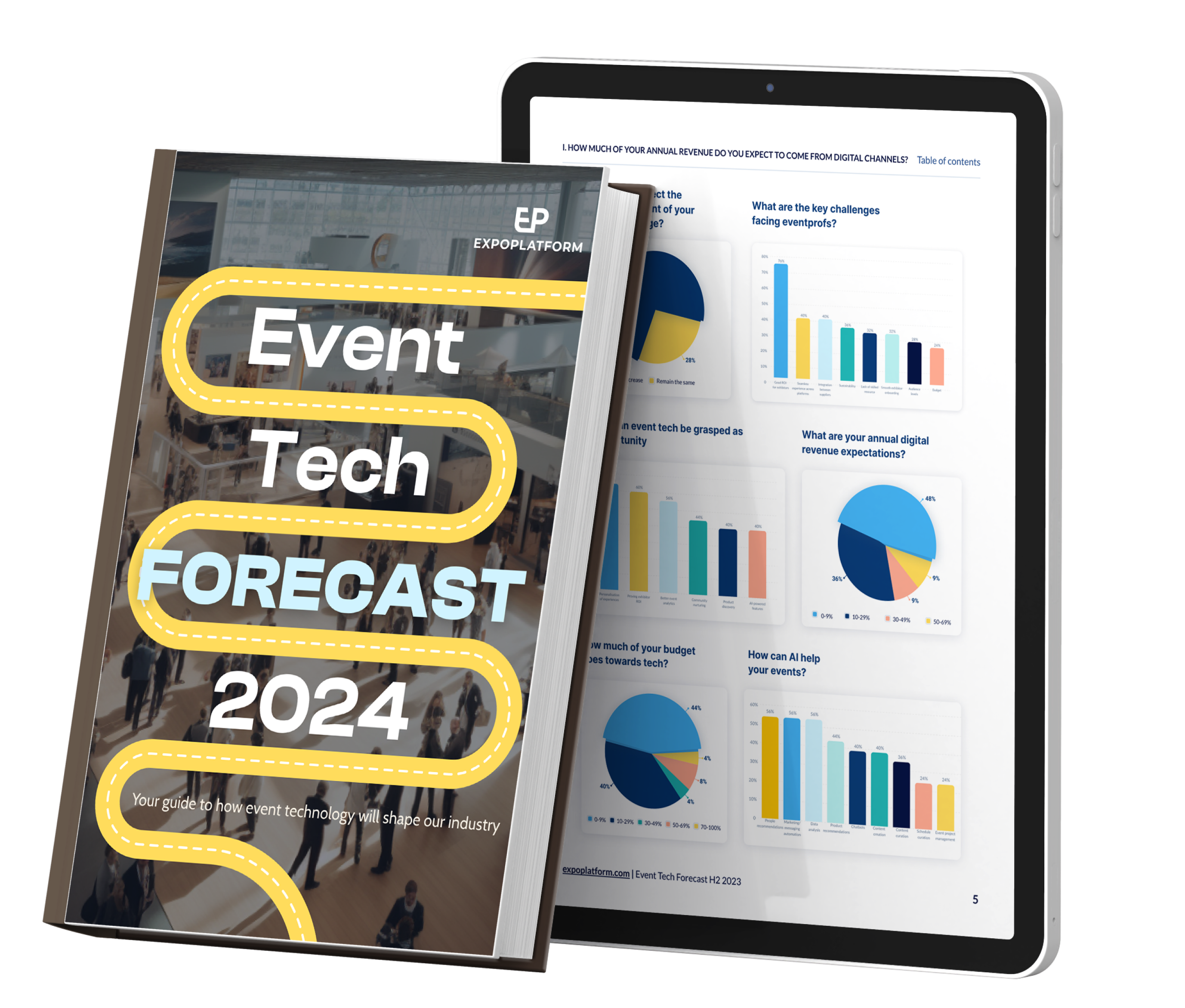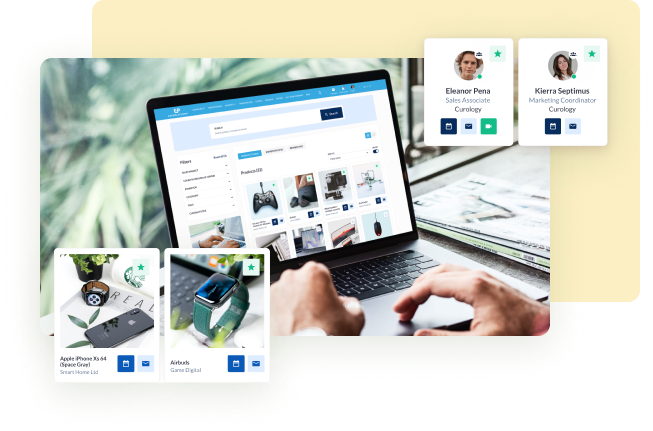
How to find a 365 Community value proposition
Building a 365 Community is about more than just having the right technology – you need a purpose.
A value proposition should be an easy-to-understand reason why your product meets a customer’s needs.
Too often the 365 value proposition is simply connecting any type of industry together, but you need to go deeper to find something that resonates.
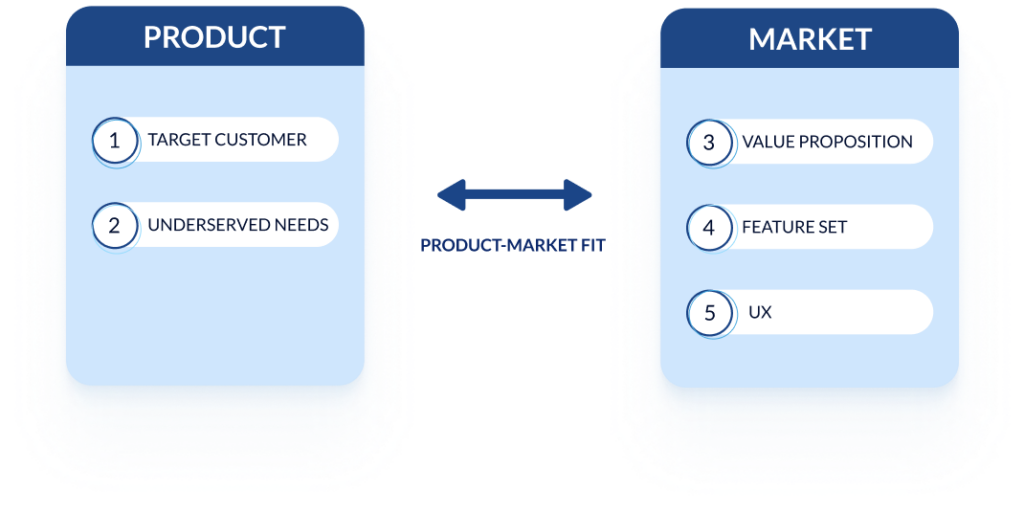
That’s why ExpoPlatform joined with Rob Millar, director at Devonshire & St Andrews, to show how an eventprof can find a route which will benefit them and their audience in a 365 community.
It came as part of the latest in our Showcase Series on the digital transformation of our industry. You can watch all sessions on-demand here.
Why build a community?
The first thing that needs to be considered is why you should have a community – what is it’s purpose?
Making yourself define your purpose is critical because it is the foundation of the community you want to build.
It allows you to define who to target, how to approach them, how you talk to them, where you have those discussions and how you measure their value.
Luke Bilton, chief growth officer at ExpoPlatform, told how this year-round model can work alongside in-person events to produce revenue from other sources.
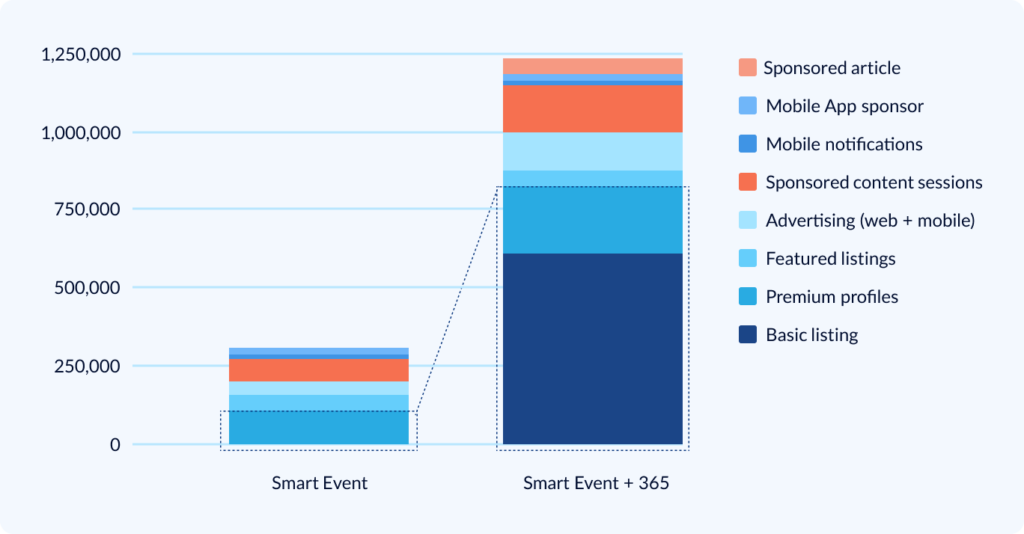
He said: “Someone once compared the very idea of 365 engagement to expecting the Easter Bunny to come around every day, which really is missing the point.
“We shouldn’t be talking about an event that never stops or a platform that somehow magically keeps on going without any resource. What we should be thinking about is how can we create a new online value proposition in my industry.
“Because while it may not be Easter eggs every day, the last time I checked I’m pretty sure everyone needs to eat something every day.”
Luke added: “Having a 365 Community as part of your portfolio can generate 300% more digital revenue than just selling digital around events on their own. So there is a very good financial reason to have 365 business model as part of your portfolio.”
How to identify your community
A community is a “very special type of group” with a keen focus based on strong relationships built over time.
There is a sense of belonging and ability to make impact for each member. So a good starting point is to work out what are the wants and needs or your audience – get to know them.
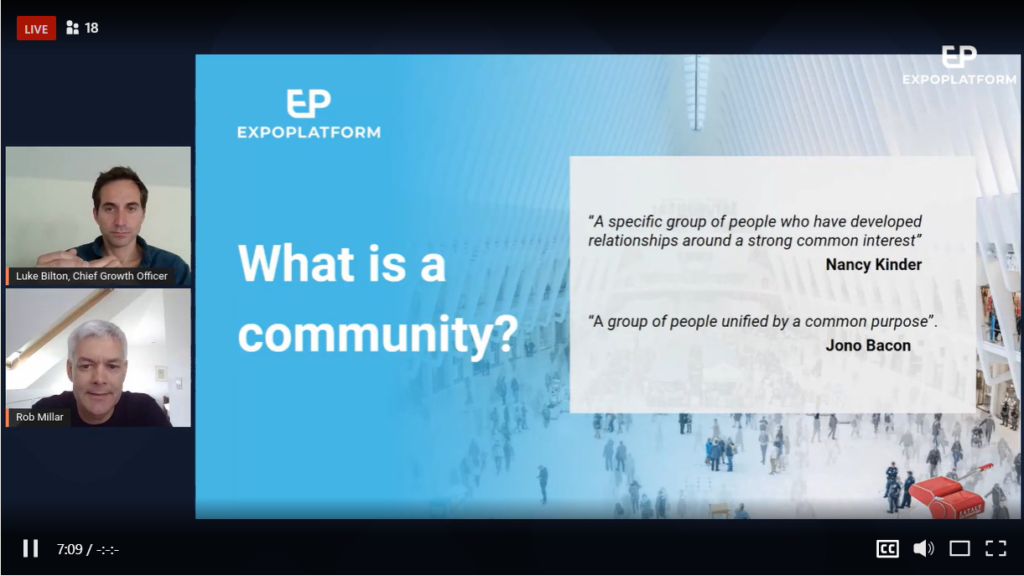
Traditional ways of identifying participants include using demographic data of an attendee by their income or location, while for an exhibitor it may be revenues or types of products they sell.
Rob, who was an expert contributor to our Community Blueprint, said: “Segmentation like this is very powerful, but can also be very blunt. This is because the segmentation doesn’t really look at the wants, the needs, the desires, the motivations of each exhibitor and attendee – and this is really, really important.
“I could split a multibillion dollar company from a smaller niche company. But actually, when you look at what their wants and needs are, what their motivation is, they actually might end up being very, very similar. This is where the concept of a persona comes in as opposed to a segment.”
‘Stop asking how to improve the event, start asking what keeps them awake at night’
A persona is a research-based profile about your typical target customers. It tends to describe what your ideal buyers are like, what their days look like, what challenges they face, how they make decisions.
It’s trying to define the needs, the goals and the observed patterns of behaviour they’re exhibiting.
Rob described how exhibitors place themselves into “four very specific groups” – the Cautious Colin, Worried Warren, Developing Dan and Advanced Anna.
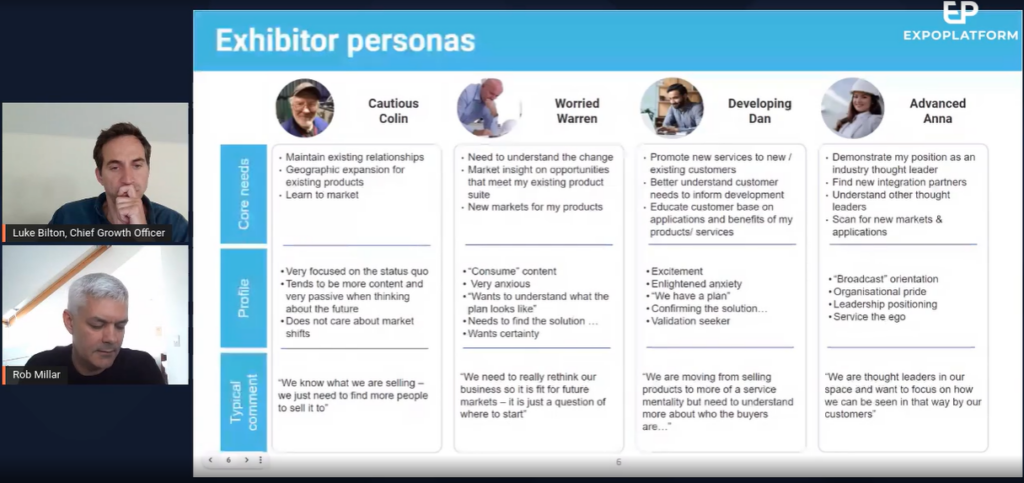
He said: “When you actually split it into those four different types of groups you end up finding each one of has a couple of things in common.
“They all want to generate leads, but they also have a lot of things that differentiate each one of them – which means that when I’m talking to exhibitors and trying to understand what kind of attendees they’re going after, I’m then able to then think about how I look at different packages I can sell them.”
Rob added: “Your event focuses on three days of your exhibitor and attendee lives. They have 362 other days a year where they’re actually having to worry about their business.
“What you need to do is move away from this concept of talking about how to improve the events and moving on to the concept of asking them what keeps them awake at night.
“Because actually, you tend to to realise that if you can understand those key motivations as to what keeps them awake at night, you can start to think of a much more holistic model that starts to talk about 365 days a year – not three.”
Data-driven experimentation
We’ve established that your most important job is to find out what engages your community. So you can use insights and creativity to refine your formula for doing this.
An existing event will have a good database of visitors and exhibitors to go to. But most industries also have an over-supply of news. One of the best starting points is to use your database and find out the answer to this question: how can I add value to this already crowded competitive landscape?
Surveys are a useful way to get an overview of what opportunities exist. They can then be followed up with a series of product discovery calls to dig into the details and flesh out what the results actually mean.
Rob set out that you should divide your research into a qualitative and quantitative approach – starting with the former.
Qualitative – get a feel for things
Researching your audience using qualitative methods tends to start with interviewing exhibitors and attendees.
The best way to do this is to go about it using a semi-structured approach – have an idea of the questions you want to ask but allow the respondent to go in a different direction.
Rob added: “Yu have a lot of open-ended questions because you want to listen to them talk, get them to sit back and think about what their worries and ask them about those questions.
“What are their goals? What are their motivations? What keeps them awake at night? That provides a lot of unstructured information, but there are tools and techniques that allow you to basically start feeding that information into groups of needs that start to then coalesce around those personas.”
Quantitative – using surveys to find priorities
You next step should be take those responses and find common themes you can put to your audience to find their priorities.
Put together a survey around some topics – it might challenges, opportunities or concerns in their industry – and ask respondents to rank them
The example below shows how a pharmaceutical event surveyed visitors on the product features that would be useful to see in a supplier marketplace.
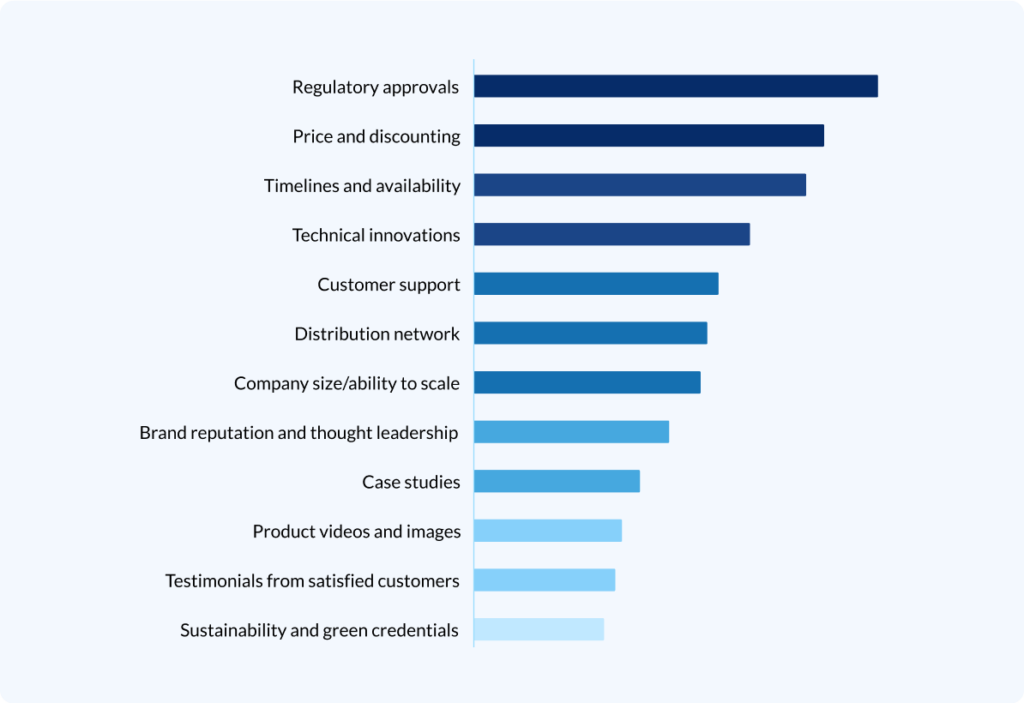
Regulatory approval came out on the top, which could then be followed up with more research into what was meant by that and where the pain points are.
Another interesting element to this study was how important price discounting was seen for the buyers – it came as the second-highest concern important, but exhibitors ranked it is a very low priority.
Rob added: “That is an incredibly valuable piece of insight, because what you can do then is educate a lot of the exhibitors about things they should be focusing on that they may not realise they do. This is where simple insights can end up being worth a fortune in many ways.”
The key takeaway from this is you’re now able to show what the needs, wants and size of issues are facing your community. It allows you to start prioritising where your customers need help.
How do you work out how to add value?
There are two key problems when trying to work out what to offer clients – working out what is valuable and too much focus on your own expertise.
But the work we have already done to develop different personas allows us to prioritise where to look. We can also identify core offers that different communities are interested in.
The Key Revenue Additions for Communities and Networks (Kracn) approach tries to do just that. The areas of focus include:
- Commerce
- Training and accreditation
- Content marketing
- Marketplaces
- Events
- Information solutions
- Research and insights
- Professional services
Work out what things your community requires for it to flourish. It is likely that choosing two, three or possibly four of these categories will be enough.
Bringing it all together
The next stage is to bring it all together into a value proposition. This is a statement that summarises why a customer would choose your product or service.
It is a positioning statement that highlights the benefits – it is more than a logo. Well known value statements include:
- Grammarly – great writing, simplified
- Trello – helps make teams move forwards
- WordPress – the world’s most popular website builder
You should build the value proposition based on combining your understanding of who the customers are and what needs they have.
Rob added: “If you understand what those needs, then you can start to build out the features and the solutions, the products and services you want to offer them and bring it all together in the value proposition.”
Create a manifesto
Let’s go beyond the ordinary. Create a mission statement for your community based on all you have learned about them.
Establish what the higher purpose is this community can serve – find out that your target audience can get behind.
This becomes more powerful if you ask the industry to help you. Shape this into something they believe in using their own words.
Luke said: “This for me is where it gets really exciting. We pull together all those different data sources, conversations that you’ve had with customers and really try to get under the skin of what actually matters to that community.
“Then you try and bring that together into something. It’s the creative leap you take based on all of that data and bring that into a manifesto.”

A Modern Marketing Manifesto, by Econsultancy is is a manifesto for change. It sets out what old marketing and new marketing is with an aim to reconstitute the practice with “digital and classic fully fused”.
Twelve areas are listed showing how their community can adapt to the modern world. It then invites readers to give them feedback and gives a hashtag people can use to share their thoughts with others.
Measure and review
Research will only get you so far. Testing different types of content and messaging allows you to find out more every day: once your community is live, every post is a chance to learn.
Make sure the culture of your team is to measure and review. Encourage experimentation with different types of content, different marketing channels.
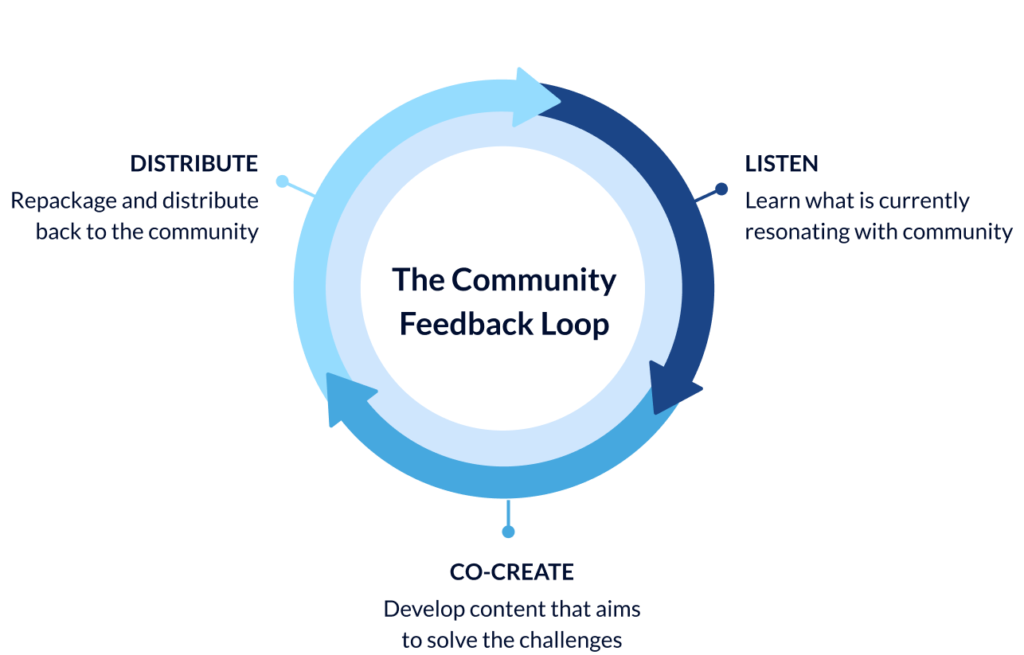
Luke said: “The community feedback loop is all about listening by using different analytical tools to learn what’s resonating with the community.
“You’re not wasting time creating articles that nobody wants. Just concentrate on the biggest, most engaging articles or topics which are out there.”
Using 365 Community technology
Technology is by no means the most important thing about creating a community.
However, its digital existence makes event tech a fundamental building block to your value proposition.
There are three main main parts which your platform will have to deliver for anyone who’s got a community alongside events – the Three Cs of Community.
It is crucial that this is done in a way which creates a seamless experience for the user when moving between each of those areas.
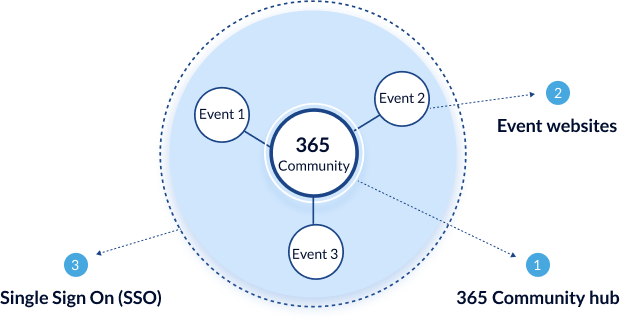
Luke said: “You want to find some way of having a consistent, seamless experience. You want to avoid a situation where all visitor and exhibitor data is in different silos.
“Usually the ecosystem would include a central community hub, various different events and a way of connecting through SSO.”
Conclusion
Just because an event lasts for three days, doesn’t mean you can’t create value for the other 362.
The digital transformation our industry has witness presents new opportunities to bring people together – which is the real role of an organiser.
Rob said: “It’s a very big space that we’re opening up, particularly if you’re an events person. The benefits of having learned a little bit about the digital side is that there’s so many other opportunities.
“The point is trying to make sure you’re focusing on the ones that your customers need. That’s where, if you can get the research piece right, everything else will follow.
“It’s just a case of being able to test and learn as you go. Trial those new ways of being able to deal with customers that allow you to build a bigger relationship across the rest of the year. That’s where I think there’s so much opportunity moving forward with the industry.”
You can find out more about how a 365 Community can drive growth – growing audiences, engagement and revenue – with our Community Blueprint. Download it for free now.
There's more you might like

ETT Club bids farewell after almost four years
The Exhibition Think Tank Club has bid a fond farewell to events industry colleagues after almost four years of collaboration. A special session was held with members from around the world who wanted to give their feedback on how the project had impacted them and their approach to business. ETT Club, as it is known, ...

How digital word of mouth can boost your event marketing
Digitized “word of mouth” event marketing can drastically boost conversion rates compared to traditional campaigns, according to an industry leader. This online referral approach sees speakers, attendees, exhibitors and influencers all take part in promoting a live show using their own social media and email platforms. Rachel Stephan, founder of Snöball, explained how this tactic ...

Associations should ‘be warned’ if avoiding 365 communities
Associations who avoid creating an online community for its members should “be warned”, according to an industry leader. Damian Hutt, executive director of the Association of Association Executives (AAE), told how some organisations with up to 30,000 people signed up could lose out to Big Tech players on gaining insights. This exclusive Transformation Stories interview ...

